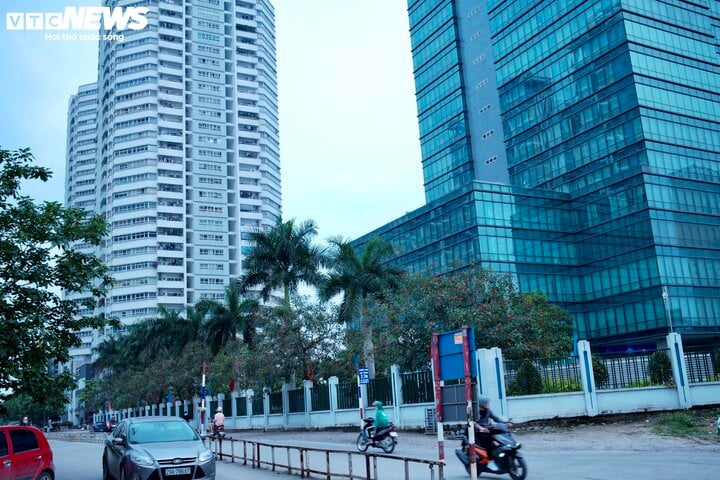According to Savills’ report, the fourth quarter of 2023 witnessed the lowest new supply of housing in Hanoi in the past 10 years, across both low-rise and apartment segments.
For the apartment segment, in the fourth quarter of 2023, the supply increased by 52% quarterly but decreased by 1% annually to reach 2,876 units. The primary supply reached 11,911 units, sliding 40% quarterly and 41% annually.
The popular housing price for both segments remains high. Among them, apartments priced from 51 to 70 million VND/m2 accounted for 63% of the new supply, increasing by 24% annually.
These apartments in this price range represented 49% of the sold units, rising by 21% annually. Apartments priced over 4 billion VND accounted for 42% of the sold units in 2023, up from 3% in 2019.
Apartments priced from 2 to 4 billion VND accounted for 55% of the market share. Only 3% of the sold units were priced below 2 billion VND.

To be able to buy a house, the opportunity for buyers may lie in the secondary market. (Photo: Cong Hieu).
For the low-rise segment, in 2023, the total new supply reached 272 units, decreasing 82% annually. The primary supply reached 710 units from 16 projects, declining 2% quarterly and 23% annually. Townhouses accounted for 44% of the market share.
The number of sold apartments in the fourth quarter of 2023 reached 3,045 units, increasing by 45% quarterly and 5% annually. The absorption rate for the new supply was 46%.
For the low-rise segment, although most developers did not change prices, the low inventory of high-priced low-rise properties led to an increase in primary prices.
For example, the price of primary villas increased by 55% quarterly to 160 million VND/m2 mainly due to the low-priced supply in Me Linh district being sold in the third quarter of 2023. The price of townhouses increased by 3% quarterly to 194 million VND/m2. The price of shophouses also rose by 3% quarterly to 328 million VND/m2.
According to Ms. Do Thu Hang, Senior Manager, Research and Consulting Department, Savills Hanoi, the residential segment continues to experience price growth due to increasing land and construction costs, developing infrastructure, and improved quality.
“The restriction on supply in the market is still ongoing, resulting in high average primary selling prices throughout the market,” Ms. Hang said.
According to Ms. Hang, in the conditions of limited supply and high primary prices, the opportunity for buyers may lie in the secondary market. The secondary market offers advantages in terms of affordability, a wide range of options, and better legal guarantees.
For instance, the average price of secondary villas per square meter of land is 7% lower than the average primary price, secondary townhouses are 24% cheaper than primary products, and secondary commercial townhouses are 40% cheaper than primary properties on the market.
At the same time, homebuyers can expect new supply from developing infrastructure. Infrastructure investment projects such as the Belt Road 3.5 and 4 will expand the residential market in Hanoi, aiming to disperse housing demand from the inner city and central areas.
Developed infrastructure will stimulate housing demand in provinces and neighboring areas with more reasonable prices and larger land funds.
Savills’ report also states that this is a positive point for the supply chain, as housing products in areas outside the central areas and neighboring provinces will increasingly meet Hanoi’s housing demand.
By the year 2024, the market is expected to receive an additional 12,100 new apartments, with 87% of the market share located in the Hoang Mai, Nam Tu Liem, and Ha Dong districts. Hung Yen and Bac Ninh will supply about 203,000 apartments from 2024 to 2026. By 2026, the low-rise segment is projected to offer 14,000 new units from 37 projects.
In addition, the passing of the Housing Law, Real Estate Business Law, and most recently, the Land Law is expected to have a positive impact on the market.
“Thus, it is believed that in 2024 – 2025 and the following period, market confidence will be more firmly consolidated, products will be provided by reputable and genuinely financially capable developers, thereby creating a more balanced and diverse market in terms of products,” Ms. Hang said.



































